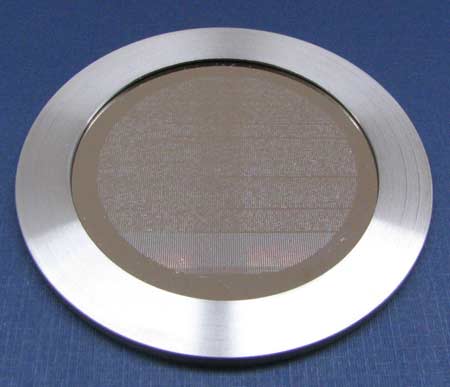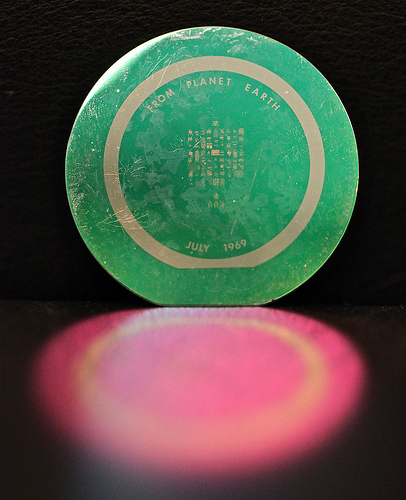
The Apollo Goodwill Disc
On July 20, 01969, humans landed on the surface of the moon for the first time. But since only two of us got to go, NASA sent a message “FROM PLANET EARTH” in the rest of humanity’s stead. The message wasn’t a letter written in ink and paper, though. It was a thin silicon disc, with messages from various world leaders etched into its surface at a microscopic scale. On the recent anniversary of the Apollo 11 landing, Steve Jurvetson posted photographs of some Apollo 11 artifacts, including the Goodwill Disc. Jurvetson writes on his Flickr page:
The story of the rushed creation of the disc is fascinating, as are the messages embedded in this interplanetary time capsule.
The concept started in June, 1969, and it was a politically charged project, in the midst of the Cold War and the Vietnam War. On June 27, NASA telephoned the state department, and got the unprecedented permission to contact the foreign chiefs of state to deposit a message on the moon. This was 19 days before launch. They were asked to compose and send typed and scribed letters to the U.S. (they came by telegram and mail).
But NASA did not know how they would store the messages so that they could last thousands of years in the harsh temperatures, solar radiation, and cosmic rays on the lunar surface. So they approached the supplier of some of the most advanced technology on Apollo – the nascent semiconductor industry.
Sprague manufactured 53,000 components on the Apollo 11 spacecraft and many more for the ground support equipment. The engineers chose silicon for the storage medium because of the density of storage and the stability of silicon over temperature in a vacuum.
You can read the text of the goodwill messages on Wikipedia, as well as on the original 01969 NASA description, which also explains a bit about the fabrication method.
Forty years later, The Long Now Foundation’s Rosetta Disk uses remarkably similar technology to provide a durable record of the world’s human languages:
For the extreme longevity version of the Rosetta database, we have selected a new high density analog storage device as an alternative to the quick obsolescence and fast material decay rate of typical digital storage systems. This technology, developed by Los Alamos Laboratories and Norsam Technologies, can be thought of as a kind of next generation microfiche. However, as an analog storage system, it is far superior. A 2.8 inch diameter nickel disk can be etched at densities of 200,000 page images per disk, and the result is immune to water damage, able to withstand high temperatures, and unaffected by electromagnetic radiation. This makes it an ideal backup for a long-term text image archive. Also, since the encoding is a physical image (no 1’s or 0’s), there is no platform or format dependency, guaranteeing readability despite changes in digital operating systems, applications, and compression algorithms.

(via BoingBoing)
Join our newsletter for the latest in long-term thinking
Subscribe